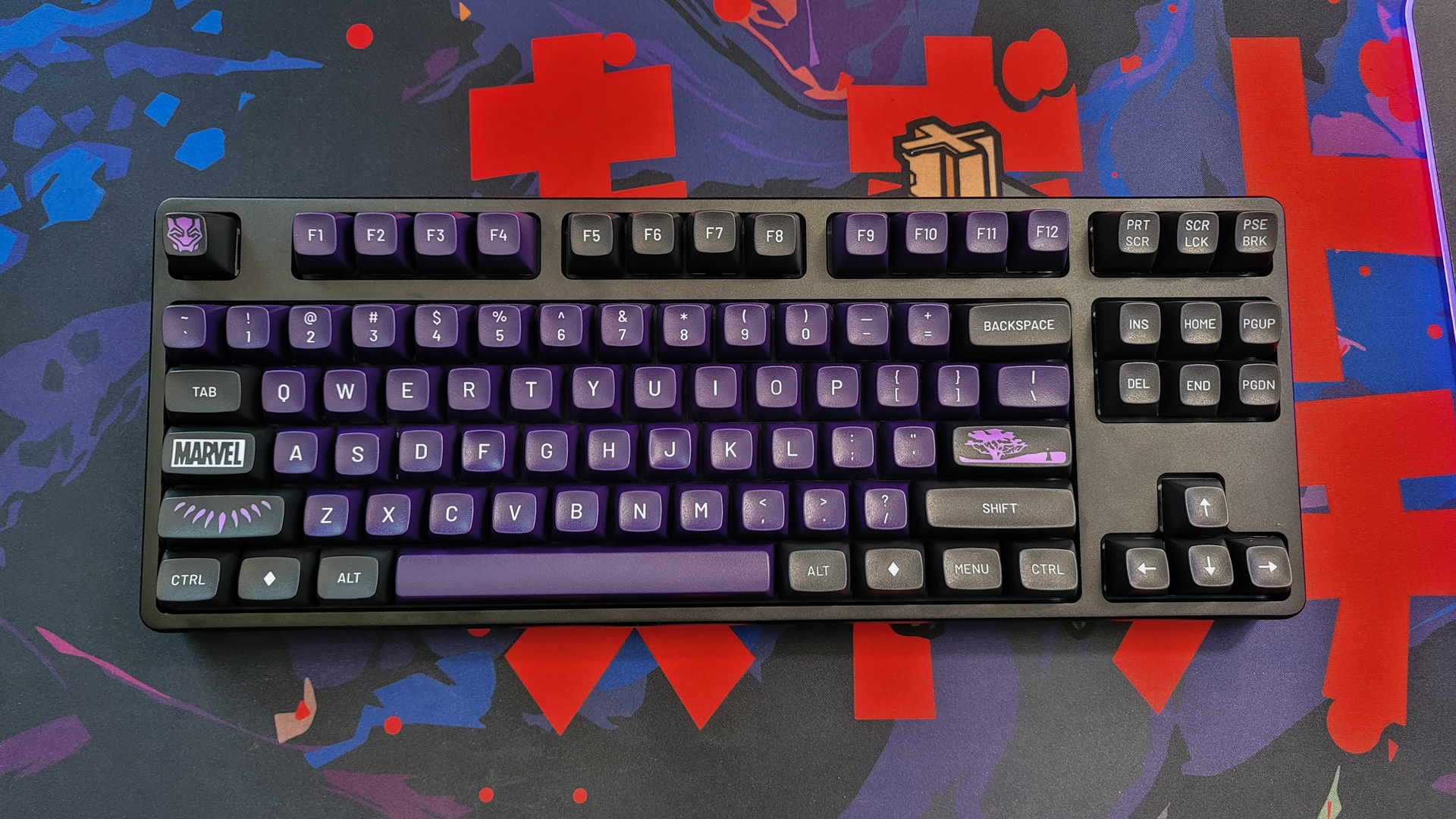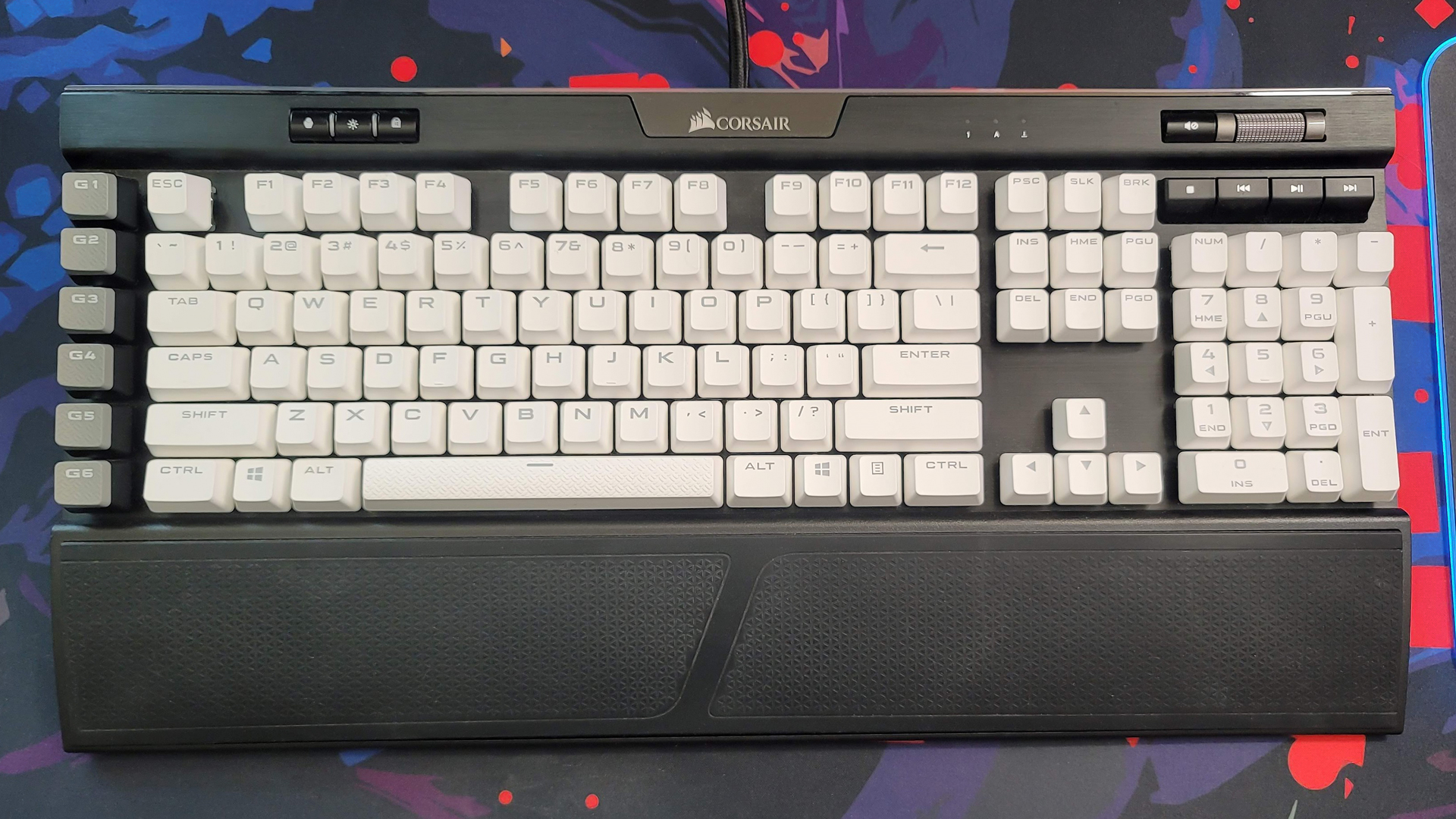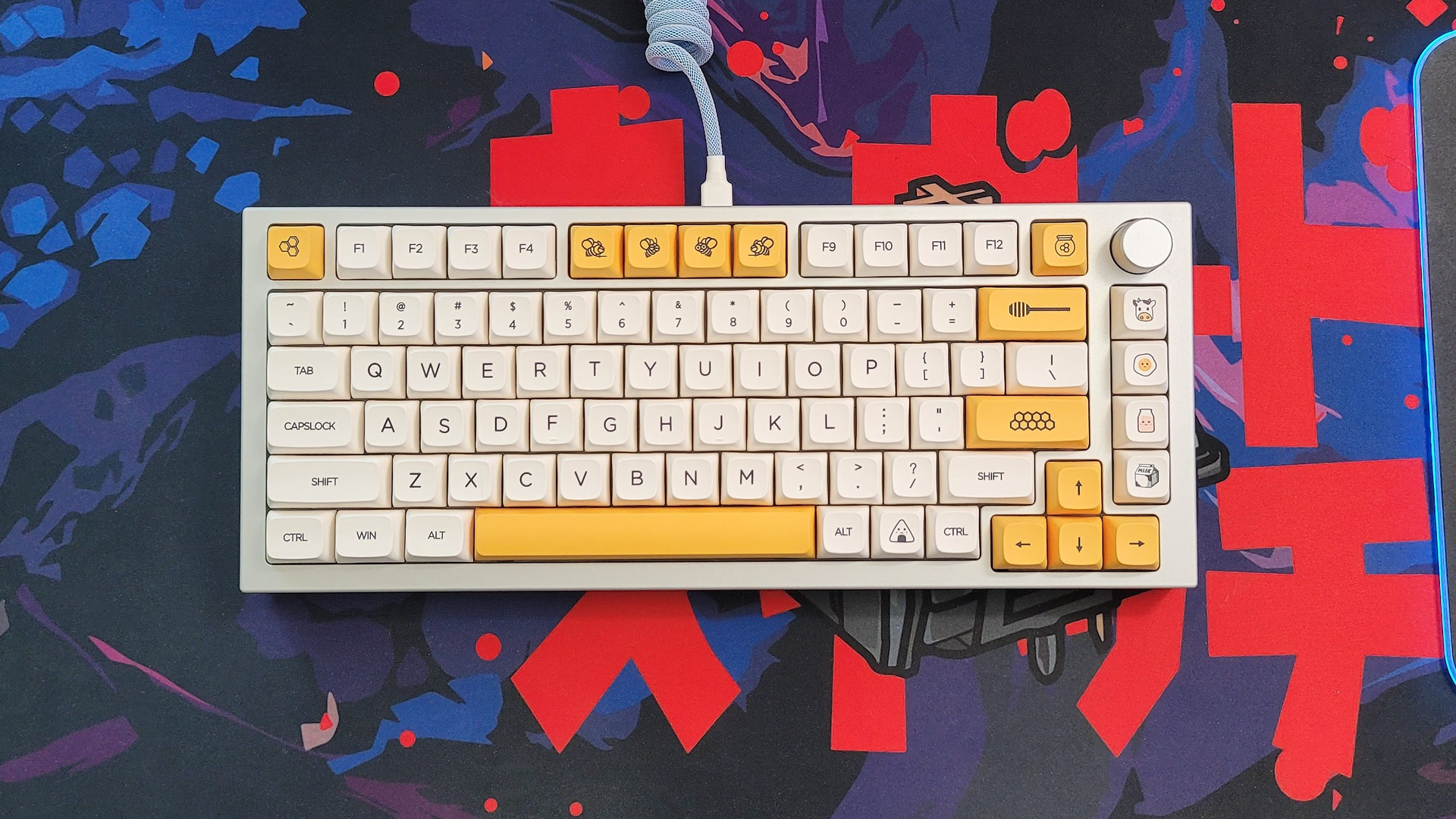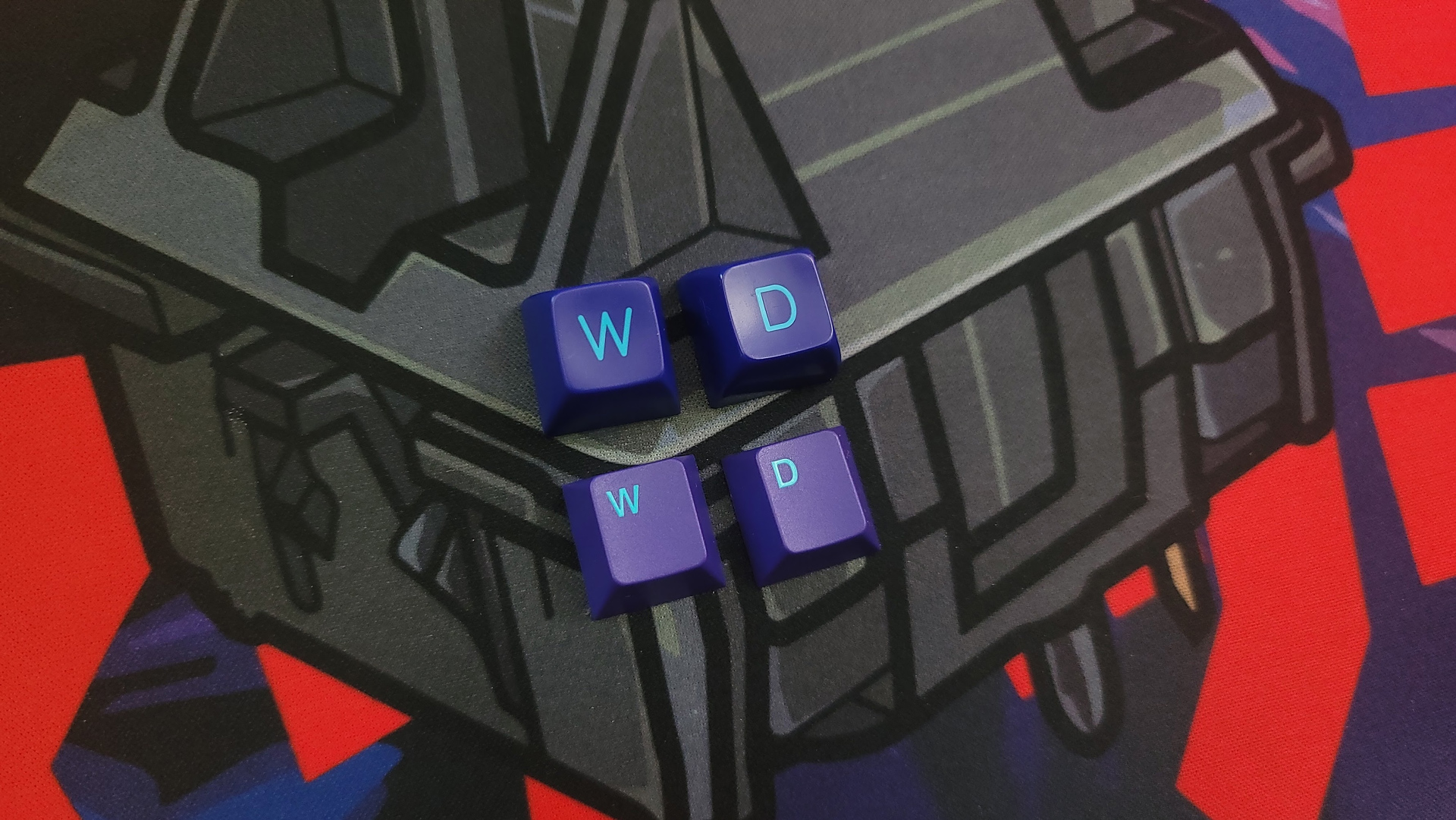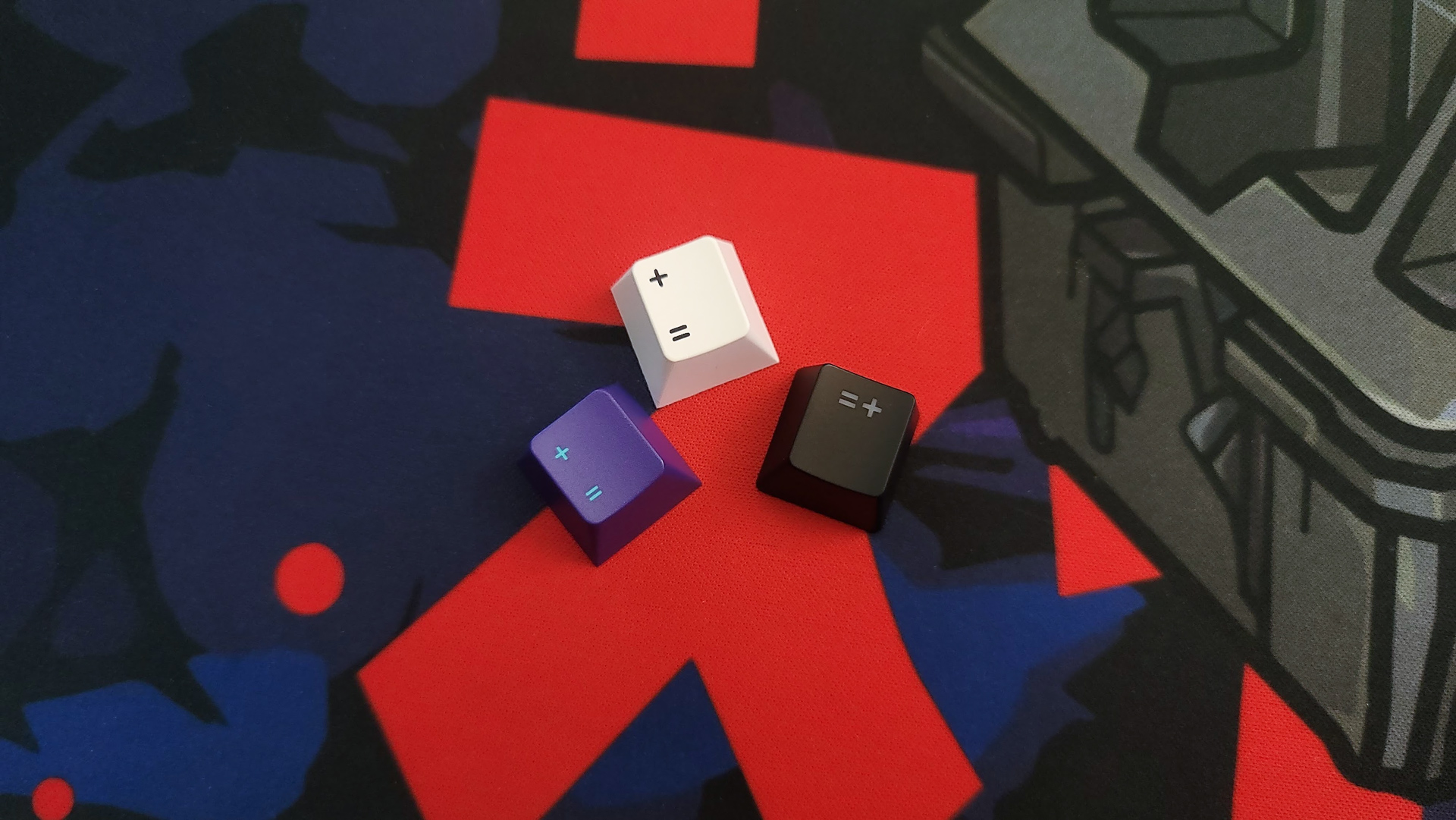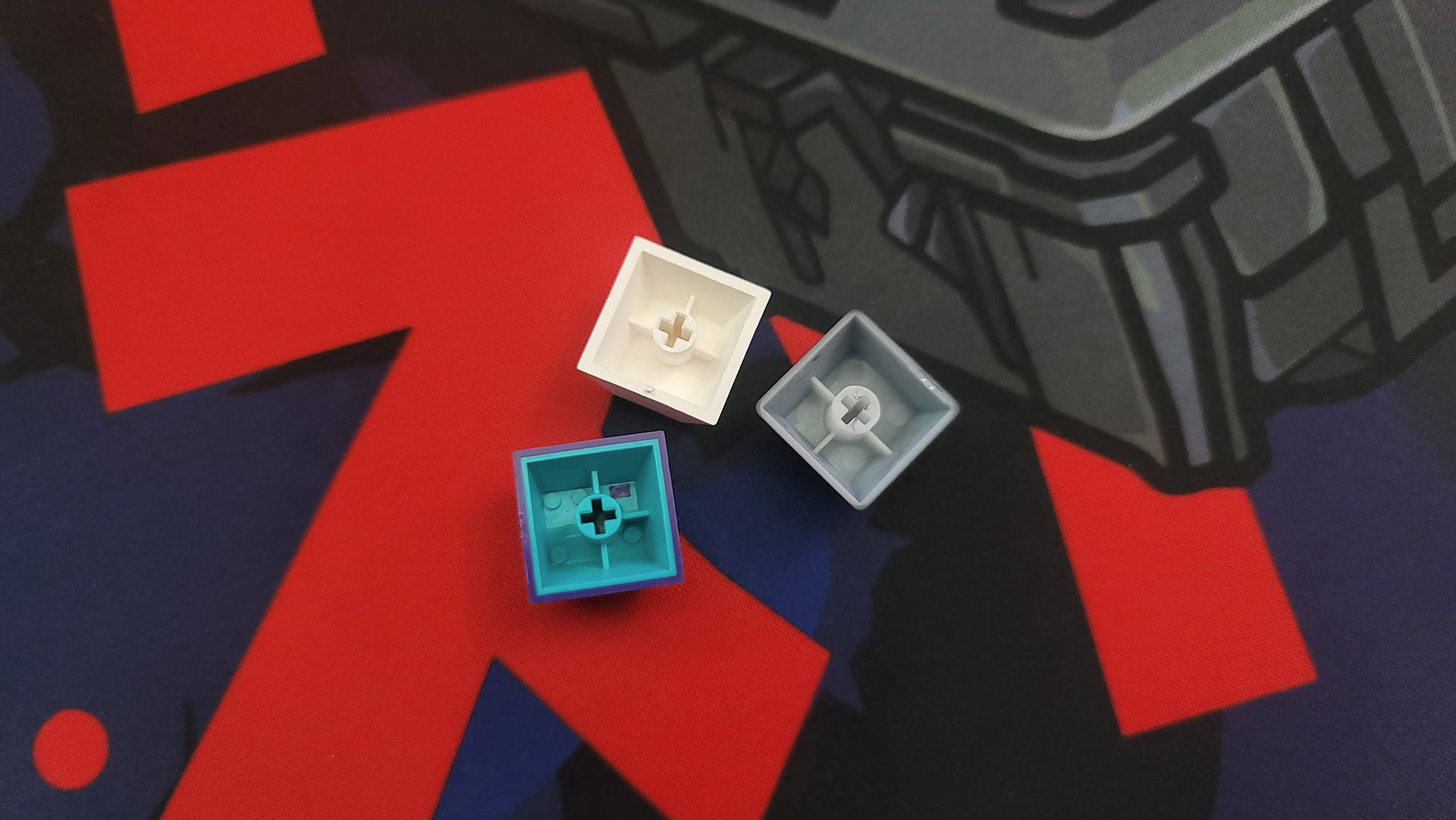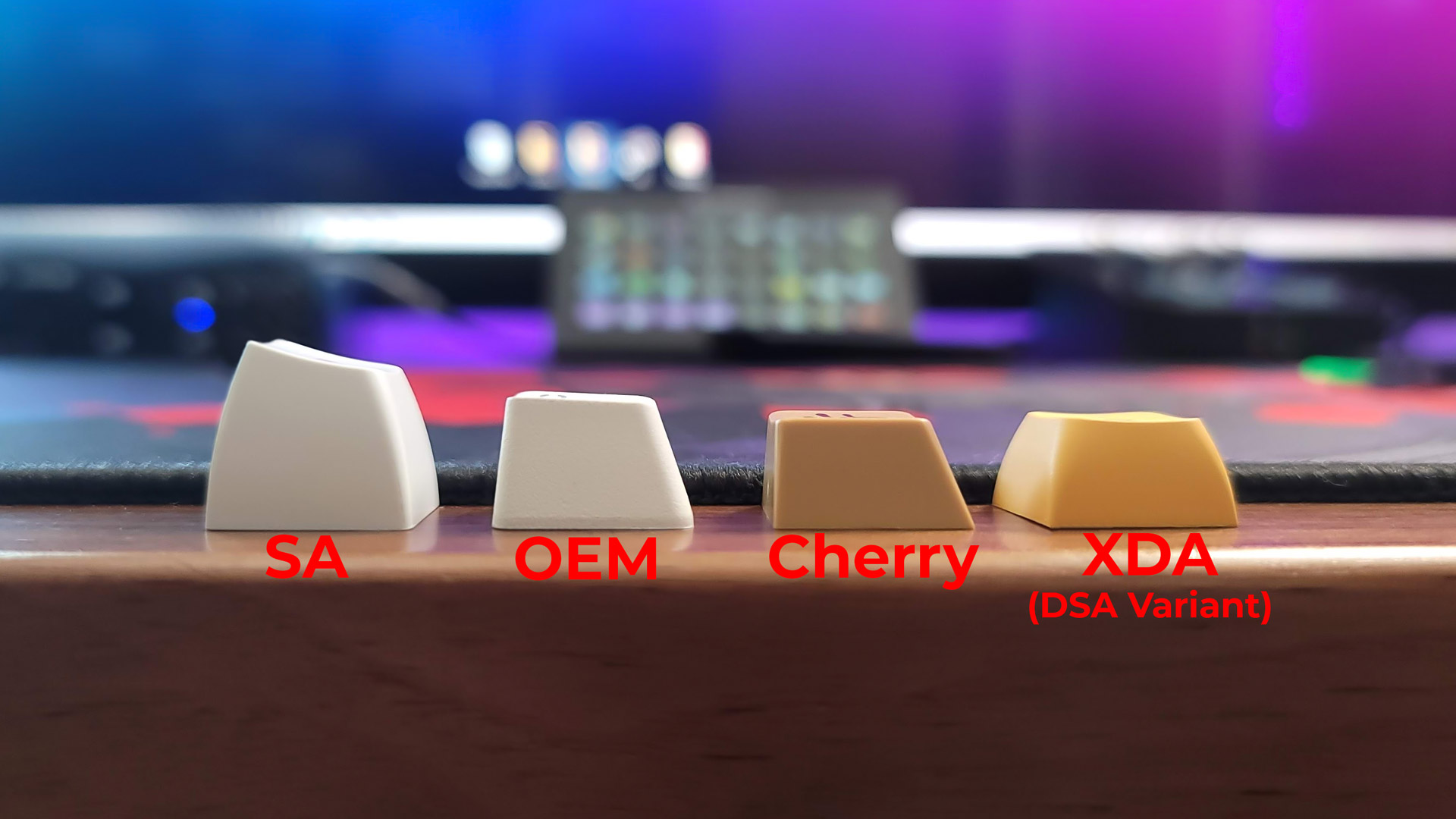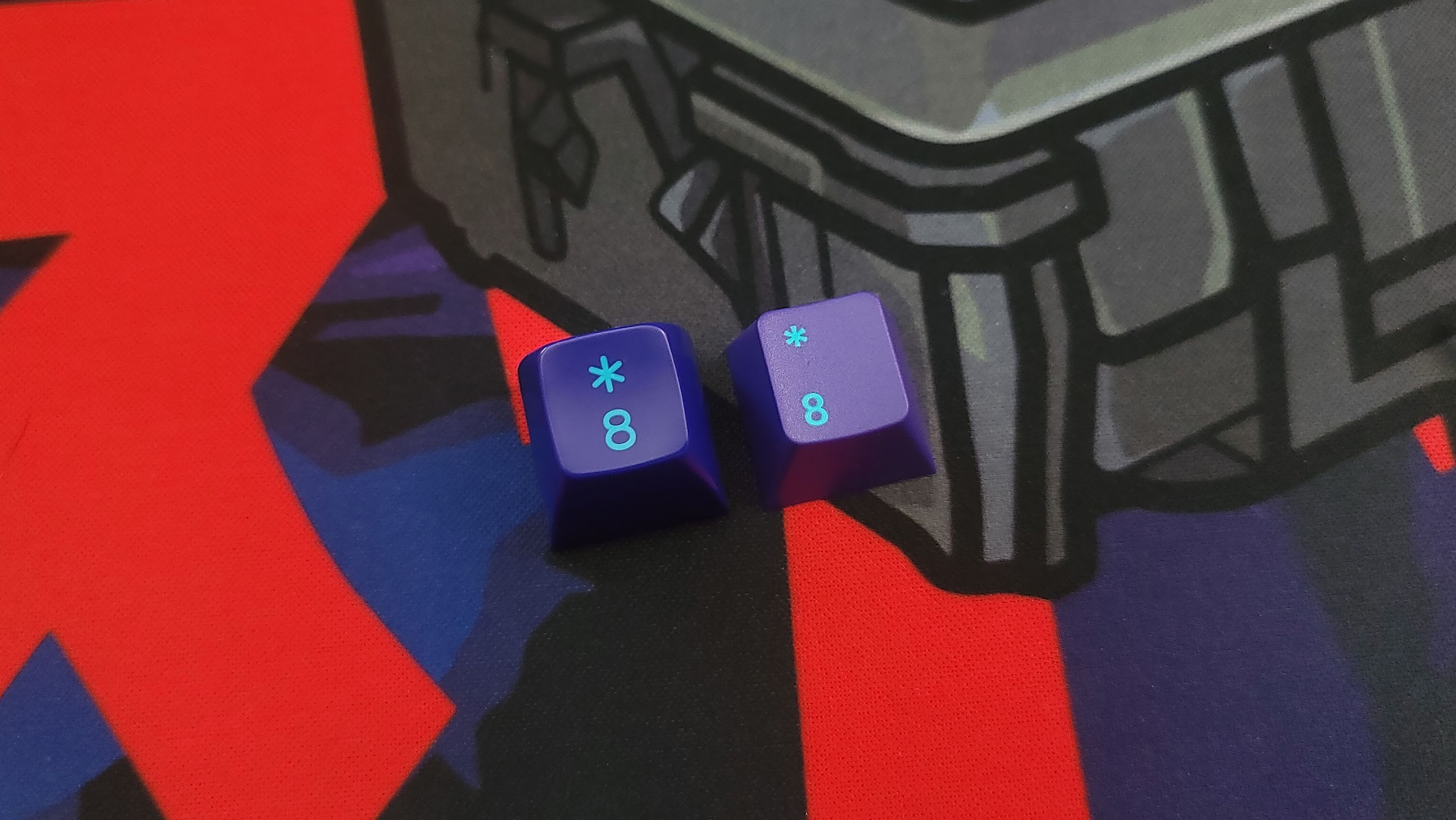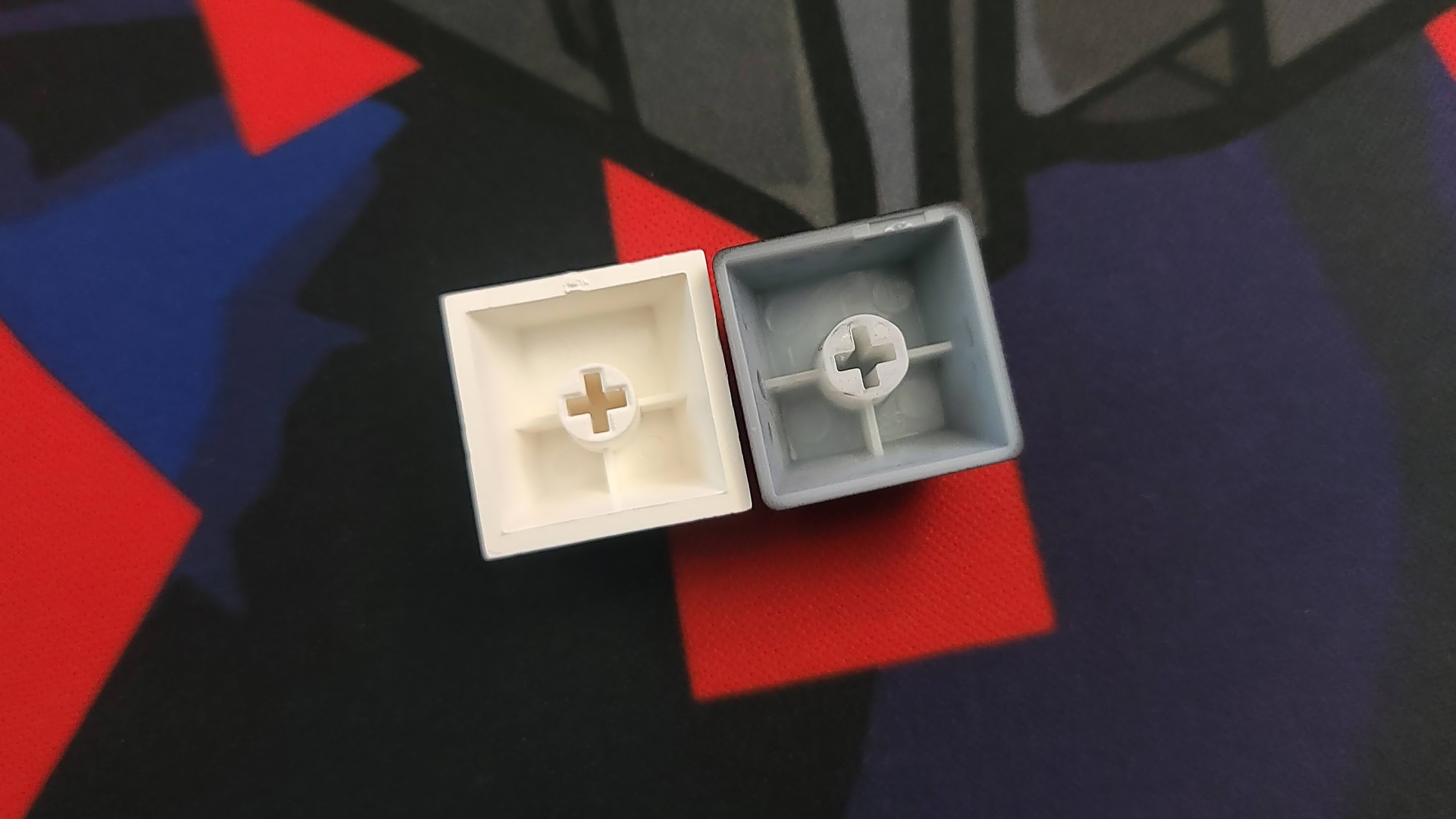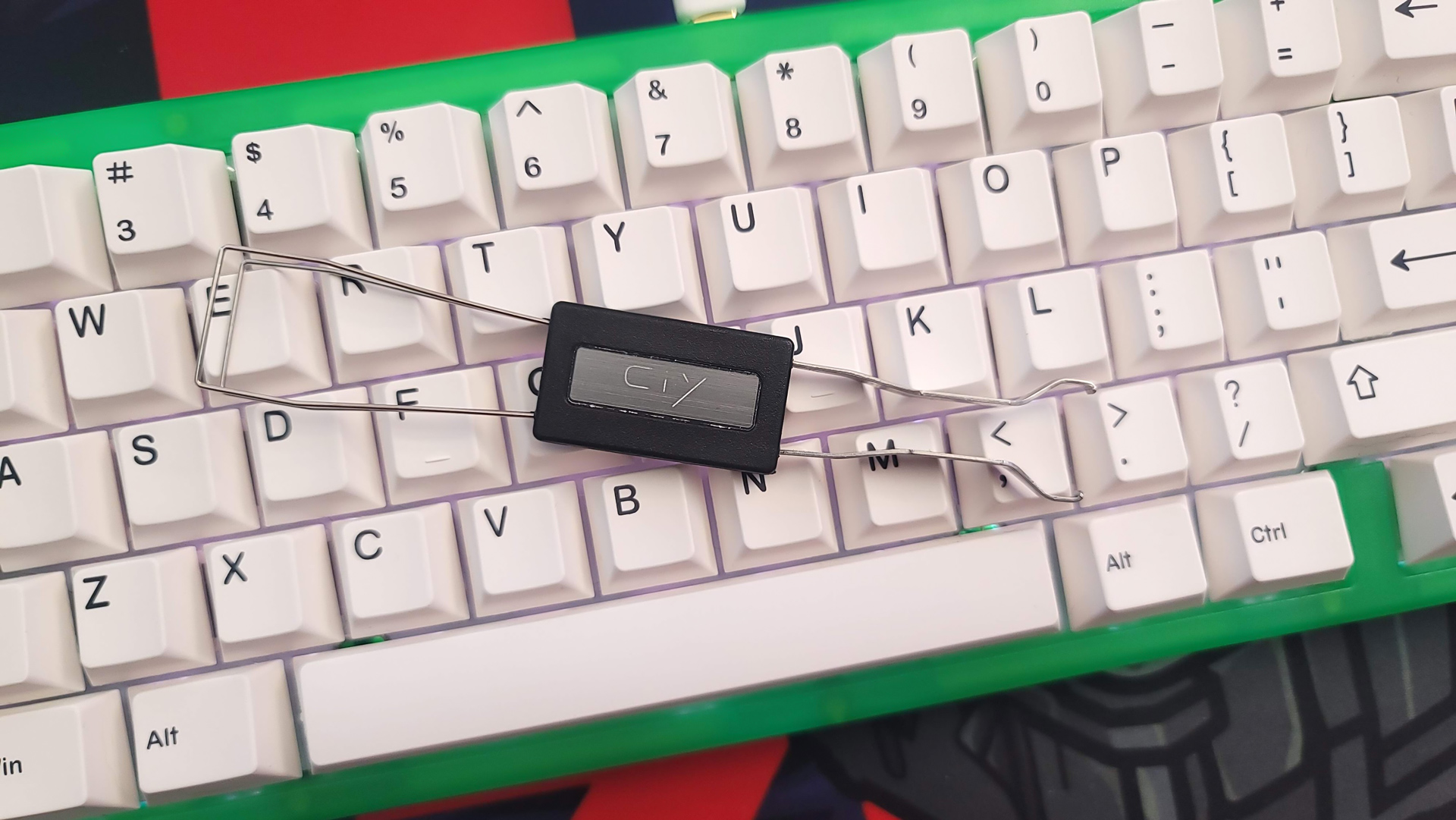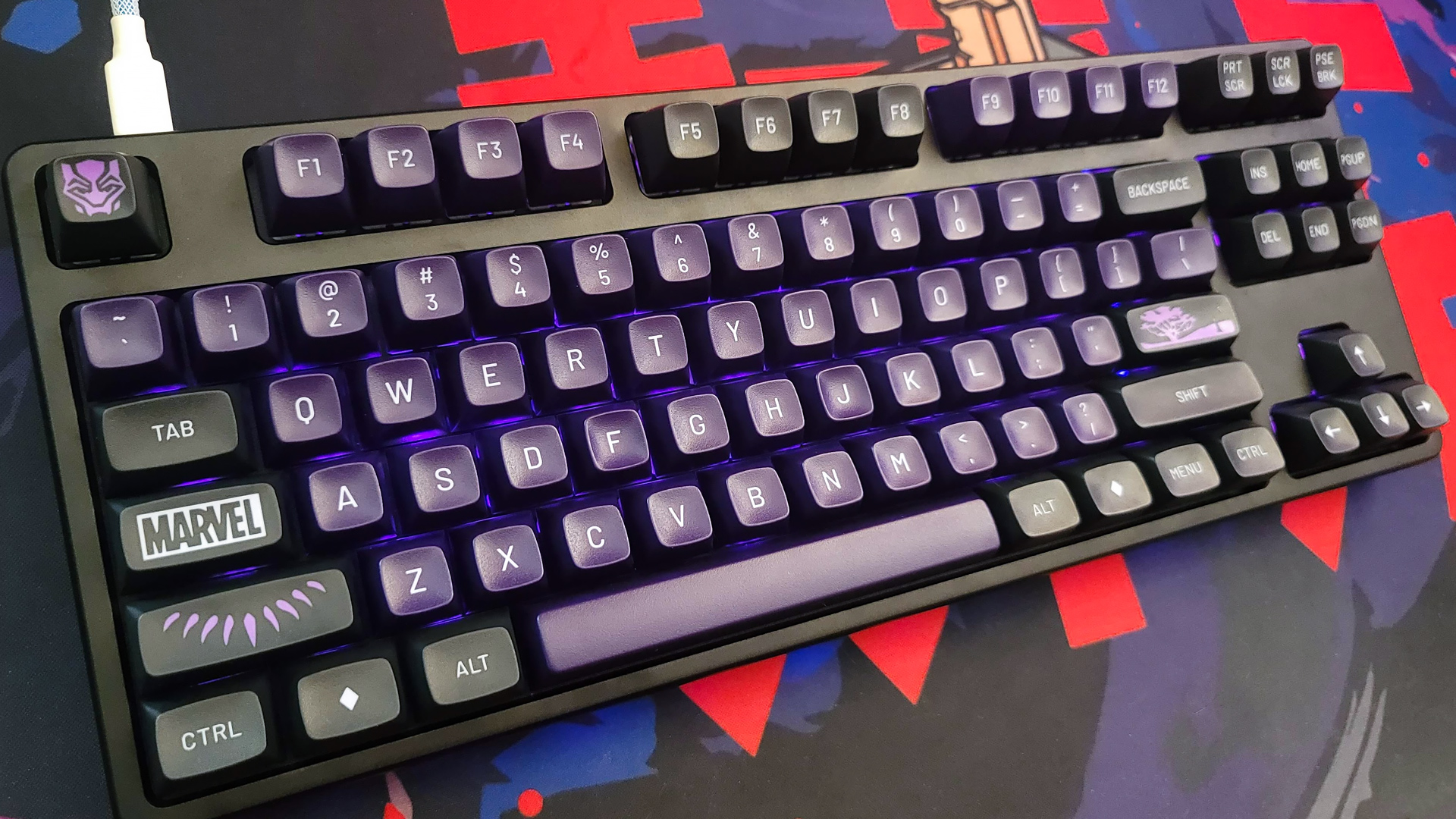How to Pick Keycaps for Your Mechanical Keyboard
What matters when buying aftermarket keycaps for your mechanical keyboard?
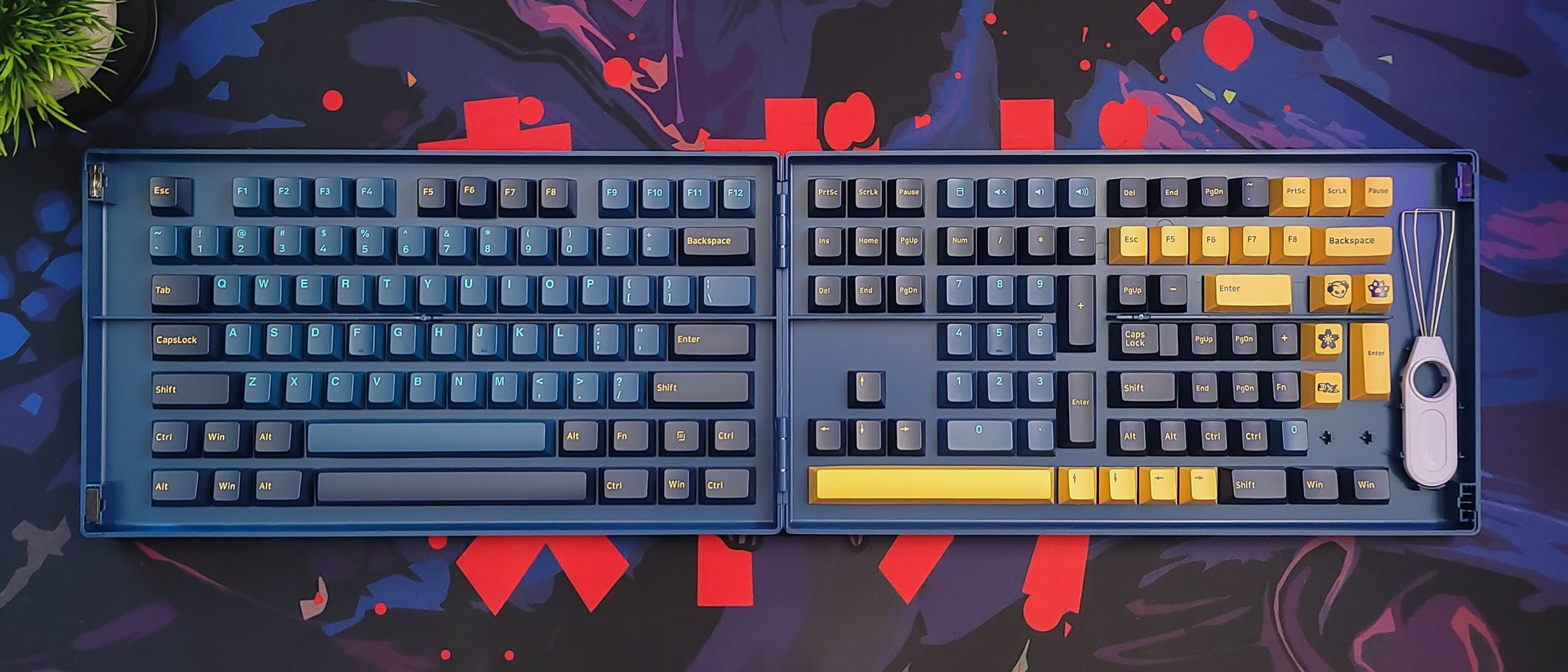
Whether you’re building a custom keyboard or just looking to spice up an old favorite, changing keycaps is often the first stop on the way to personalizing your keyboard. It’s also one of the easiest upgrades a fledgling modder can make, requiring only a keycap puller to get started.
But if it’s your first time shopping for aftermarket keycaps, it’s easy to get overwhelmed and confused about what really matters. Product listings often go into detail on the exact type of plastic used, the way the legends are made or the profile they follow without ever explaining what those different qualities mean. Prices can also vary from the very cheap to more than a whole second keyboard.
After reading this guide, you’ll be able to cut through the noise, know what matters and choose the keycap set that’s right for you and works for your keyboard.
Quick keycap shopping tips
Why you can trust Tom's Hardware
- ABS is better for color, PBT is better for longevity. While each type of plastic has fans claiming it’s the best, each has its benefits. ABS plastic is better for showing vibrant colors but is prone to shining with extended use. PBT won’t wear down in the same way but isn’t as colorful and is more susceptible to warping.
- Doubleshot legends are usually best, but dye-sublimated ones can be good too. Doubleshot keycaps often have crisper legends, due to the injection molding process, but dye-sublimated keycaps can often look great at reduced cost. Look for close-ups of the legends before purchasing.
- Unless you’re only interested in RGB, avoid thin, laser-engraved keycaps. The cheapest keycaps tend to be thin and backlit with laser-etched legends. These can be great for showing off RGB but are often made from low-quality ABS plastic and don’t feel great to type on.
- The thicker the keycap, the better. Thick-walled keycaps often feel more solid under the finger and are nicer to type on (up to about 1.5mm).
- Keycap profile affects sound and feel. Watch typing tests and consider preferences before buying. Taller, spherical keycaps, like those in SA profile, often have a lower-pitched and slightly louder typing sound than shorter, cylindrical ones. SA keycaps can also feel more fatiguing and have a learning curve.
- Cheap keycap sets aren’t necessarily bad but often struggle with quality control. Amazon and other marketplaces are flooded with cheap keycaps. Cheap doesn’t necessarily mean bad, but they’re more likely to have quality control issues, like off-center or fuzzy legends. Read reviews when possible and check the vendor’s return policy.
Which keycaps will fit your keyboard?
The first and most important thing to consider when shopping for keycaps is which sets will fit your keyboard. The vast majority of keycaps are designed to fit cross stem switches, which includes Cherry MX and its clones. If the top of your switch looks like a “+” then you’re in luck. If you’re using a Topre keyboard or a keyboard with Logitech’s Romer-G switches, the options are much more limited.
Most keycap sets are designed to support the “standard” layout shown in the picture above. Even though many keyboards look the same at first glance, pay special attention to the bottom row and modifiers.
Gaming keyboards, like the picture above, will often shrink the Windows key and increase the size of Ctrl and Alt to make them easier to access in-game.
Likewise, if your keyboard uses a compact layout, such as the Glorious GMMK Pro (pictured above), keys are often shrunk to achieve the smaller size. This extends beyond the bottom row, so take time to look over the entire board.
If your keyboard uses non-standard keycap sizes, don’t worry! The most affordable aftermarket keycaps often only support standard sizing, but many kits include extra keys for exactly this situation. Look for sizing charts on the product page to ensure the kit you’re considering is compatible with your keyboard.
ABS vs PBT keycaps
Keycaps are available in two key plastics: ABS or PBT. Both have dedicated fan bases that fervently believe theirs is the best, but each has pros and cons. Neither is absolutely better than the other, but their strengths and weaknesses can make them a better fit for individual users.
ABS, or Acrylonitrile Butadiene Styrene, is a lightweight thermoplastic. It’s a popular plastic used in products throughout our daily lives, including the cases housing many keyboards. ABS excels at representing bright, vivid colors. It is also the plastic used by GMK and Signature Plastics, the manufacturer of some of the most prized custom keycap sets in the world. ABS keycaps tend to have a higher pitched sound than PBT.
The downside to ABS is that it wears down over time, leaving a shiny gloss on the face of the most used keycaps. This shine can make your prized keycap set look worn sometimes mere months after being installed on a keyboard if it’s used enough.
PBT, also known as Polybutylene Terephthalate, is significantly more dense. As a result, one of the biggest selling points of PBT is that it resists shining, even with extended use and is considered more durable. PBT keycaps also tend to be thicker since they use dye-sublimation for their legends more frequently than ABS.
PBT’s biggest con is that it is unable to achieve the same vibrancy as ABS, so colors tend to be more muted overall. The Spacebar in PBT keycap sets is also more prone to warping during manufacturing, which can interrupt the uniform look of the keyboard or, worse, the functioning of the spacebar. It is rare to see warping reach this level on any but the cheapest PBT sets.
Doubleshot keycaps and other types of legends
Legends are the letters and symbols that appear on the face of the key, and how they get there is more important that you may think. There are multiple methods manufacturers use for applying legends to save money or increase durability. The most common types, in order of quality are:
- Pad-printed: This is the most common type of legend printing found on pre-built keyboards but is less common on aftermarket keycap sets, due to lack of durability. Pad printed legends are ink-based and applied directly to the top of the keycap during manufacturing.
- Laser-engraved: Laser-engraved legends are most often found on keycaps with translucent legends to show RGB backlighting. As its name implies, this uses a laser to engrave the legends on the keycap. This legend is prone to chipping around the edges and staining if it is filled in with a light colored material, (such as to create white legends on black keycaps).
- Dye-sublimated: Dye-sublimation legends are created by using heat and dye to permanently stain the plastic of the keycap. These legends are very durable and will not wear out over time but can have softer edges, due to the dying process. This type of legend is most common to PBT keycaps due to their reduced wear and tear versus ABS.
- Doubleshot: Doubleshot keycaps are created by bonding two pieces of plastic for the legend and outer shell of the keycap. When done well, these keycaps are often the most durable and feature the most crisp legends.
Dye-sublimated and doubleshot keycaps are the best of the four most popular varieties. Quality between the two can vary from manufacturer to manufacturer, so which is best will vary. When shopping for keycaps, take a close look at the legends to make sure they’re clean and easily legible.
It’s important to note that only laser-etched legends will show RGB backlighting on the letter itself. That said, there are many doubleshot keycaps that use translucent plastic for their legends and will still illuminate. Dye-sublimated keycaps and those with colored legends use opaque plastic throughout their construction, so RGB illumination will be limited to underglow only.
What is a keycap profile, and which is right for you?
In the world of keycaps, “profile” refers to the shape of each keycap and the contour they create for the whole keyset when installed on the keyboard. A keycap set’s profile directly impacts how familiar it will feel and how comfortable it is to type on, (as well the sound they create: bigger keycaps have a deeper, more hollow sound profile), but should not impact compatibility on most keyboards.
Keycaps come in two main categories: cylindrical and spherical. Cylindrical keycaps have a “u” shape across their entire surface and usually have flat, angled sides with straight corners. Spherical keycaps have a rounded concave surface, rounded sides and are often much taller.
While there are many variations on each type, the four main profiles to know about are Cherry, OEM, SA and DSA. Cherry and OEM keycaps are cylindrical and overall very similar, but OEM is slightly taller. OEM profile is very popular on production keyboards, but many find Cherry profile (named after the popular key switch brand) more comfortable because of its lower profile.
SA and DSA keycaps are spherical but are more starkly different. SA keycaps are distinctly vintage and recall the tall, highly contoured keycaps of decades past. DSA is much shorter but when installed as a whole set creates a flat plane for typing. This type of keycap set is referred to as “unsculpted” because of its lack of curvature. Both sets usually involve a slight learning curve since very few pre-made keyboards come with these keycaps.
Other keycap profiles include MT3, ASA and XDA but this just names a few. If you’re new to aftermarket keycaps, we recommend avoiding unsculpted keycap sets, as the lack of contouring can make touch typing more difficult at first. But, like most parts of keyboard customization, it’s really about what style speaks to you the most.
Keycap thickness
There’s a reason many vendors quote the thickness of their keycaps: thickness matters. How much it matters depends on your personal preferences. Keycaps with thicker walls often feel more solid when bottoming out and have a deeper sound when typing. By comparison, thinner keycaps often feel less substantial and have a higher-pitched typing sound.
On average, keycaps considered thin usually measure about 1mm. Though the trend has begun to change at the flagship level, even many of the best gaming keyboards typically feature keycaps of this thickness. Conversely, enthusiast mechanical keyboards, such as the Ducky Mecha SF, feature thick-walled keycaps closer to 1.5mm. Keycap thickness is one important element to why enthusiast mechanical keyboards often feel noticeably nicer to type on. Generally speaking, standard PBT keycaps tend to be thicker than their ABS counterparts, but doubleshot PBT and doubleshot ABS keycaps tend to be around the same thickness.
One important caveat here is RGB backlighting. Thinner walls allow more light to shine through, leading to brighter, more vibrant illumination.
Is it worth paying extra for high-end keycaps and name brands?
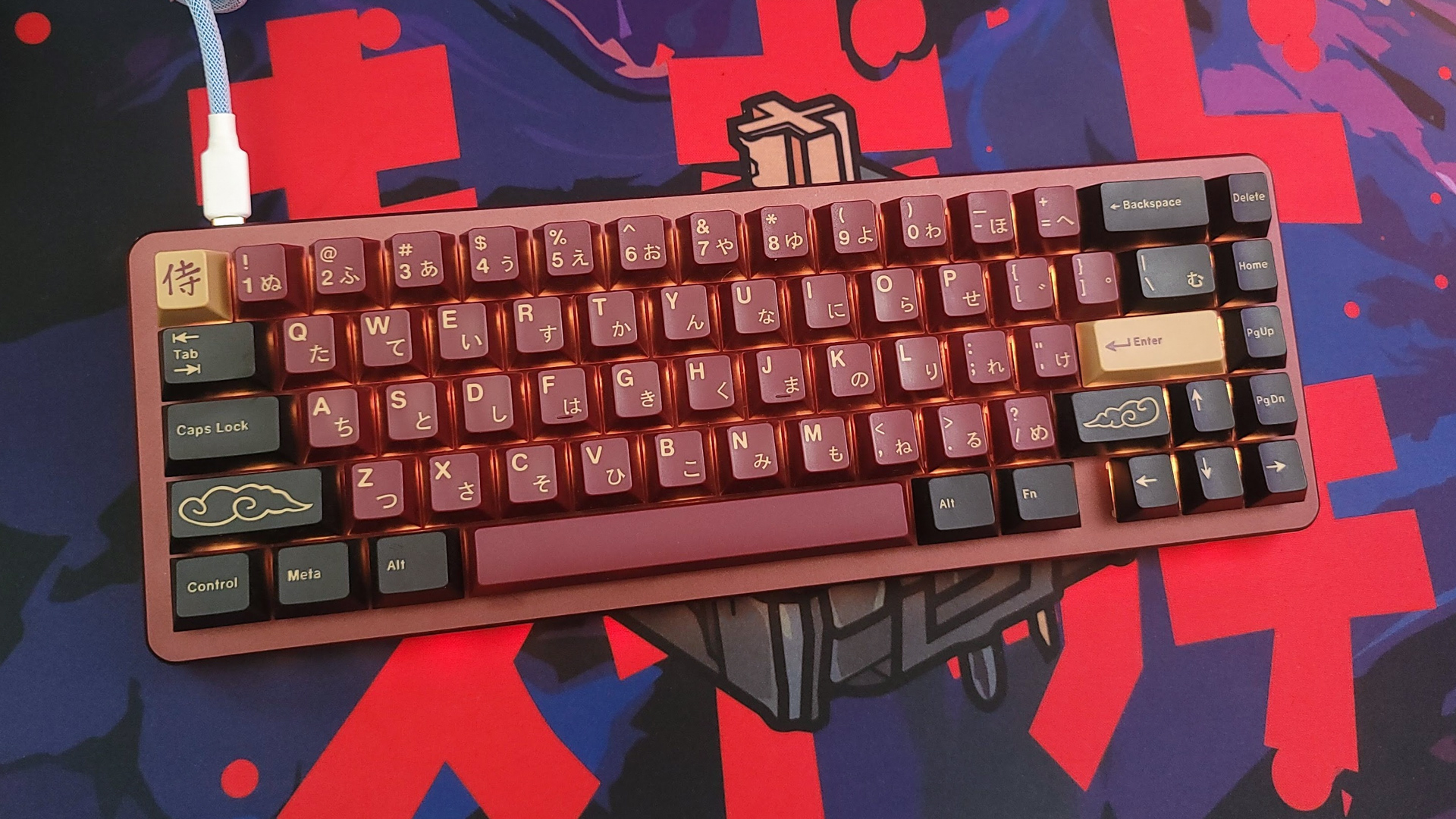
Brands like GMK and Signature Classics have well-deserved reputations for the high quality of their products but also have high prices to match. Don’t feel like you need to pay exorbitant prices to get a high-quality keycap set. While it’s more likely that you’ll have a great experience by paying extra for these brands due to their exceptional quality control, there are great keycap sets from companies like Mistel, EnjoyPBT and Akko that impress at much more affordable prices.
Will I need anything else to change my keycaps?
Changing keycaps is easy! All you’ll need to get started is a keycap puller. There are no mechanical parts to a keycap and they attach with a simple friction-fit to the stem of each switch. To remove them, you fit the wire loop of the keycap puller under each side of the keycap and pull. Putting the new keycap on is even more simple: line up the stem and press down. It’s that easy.
Where can I buy custom keycaps?
There are many places to buy custom keycap sets. Amazon has a wide selection, but search tools can make finding what you’re looking for difficult. The same is true of Chinese wholesaler, Banggood. Keyboard-specific websites like Mechanical Keyboards, KBDFans and KPRepublic also feature a wide array of options often not found on more mainstream sites.
Some of the most highly prized sets are designed by community members and purchased through the group buy system on sites like Geek Hack and Reddit. These sets are often highly themed and produced in limited quantities by companies like GMK, making them quite expensive. Group buying involves paying up front with other community members to fund the production run, then waiting for fulfillment. This process can take months or more and involves significant risk on the buyer’s part, so it’s not something we recommend for newcomers. On the plus side, should the set prove popular, they often grow in value over time.
Bottom Line
When shopping for aftermarket keycaps, there is only one hard rule: they need to fit your keyboard. From there, it’s all about making that keyboard uniquely your own. If all you care about is looks, it’s easier to get out cheap by buying an affordable ABS set in a color scheme you like. If you’re looking for something more specific or with higher build quality, you’ll have more to consider and probably pay more for the privilege.
No matter which path you choose, decking out your keyboard with a set of custom keycaps is one of the most fun parts of the keyboard hobby and a gateway to the deeper world of keyboard customization.
Get Tom's Hardware's best news and in-depth reviews, straight to your inbox.

Chris is a regular contributor for Tom’s Hardware, covering mechanical keyboards, peripherals, and content creation gear.
-
drajitsh A well written article on a contentious and poorly covered topic. It is very much appreciatedReply -
schwartzasher So, the article has some bad misinformation. GMK and Signature Plastics are two different companies, thick keycaps doesn't necessarily mean that the keycaps will be good at all. Hate to break it but ePBT is EnjoyPBT, both the same exact brand. For those that care, Akko keycaps are known for being clones (yes, I know not everyone cares about that). ABS and PBT can have the same sound signature. For ABS vs PBT, take the same thickness keycaps (measure with caliper and you can see same thickness), put them on the same build one after another and it could easily sound the same. Also lots of the plastic keyboards we use today are polycarbonate, so they are not ABS inside the case. If all the boards out there used ABS for their cases, we would see so many shined cases alone. The GK61X, and other equivalents from Royal Kludge, Ducky, Anne and more, are all plastic that isn't ABS or polycarbonate. I am mentioning those as they are the most popular boards to find when someone is looking at a board to switch out from their "gamer" one. I own a set of DCS keycaps, made by Signature Plastics, same place that makes SA keycap profile, and they may be thin but they do feel great. They are a quality feeling keycap that I would actually recommend to people although they are thin. I see that you mentioned with keycap thickness that it depends on your preference of what you like, which I do agree on, but when you mention "Keycaps with thicker walls often feel more solid when bottoming out and have a deeper sound when typing. By comparison, thinner keycaps often feel less substantial and have a higher-pitched typing sound.", this also has to do with the materials of the case to the keyboard, the switches (whether they are lubed or not), and also the materials of the plate used.Reply
Another thing you mention in the article is a whole bullet point on PBT being better than ABS in longevity. This is not true. If you are only going on keycap shine then that is true. If ABS really wasn't good for longevity then why do lots of the popular gaming brands use it as their stock keycaps.
You mentioned also Romer G and Topre as two more limited options for finding keycaps. The only options to find for Romer G would be replacement caps just for the gamer buttons. Otherwise, you are stuck using the stock keycaps on a Romer G board. -
gamebynight Thanks for catching a couple of typographical errors. I've requested edits regarding the companies. I'm well aware GMK and SP are different companies and ePBT and EnjoyPBT are the same. I own sets by all three :)Reply
I think we're getting into the weeds elsewhere, though. ABS vs PBT longevity is related to shine. In terms of wearing out completely, who knows, but one will look worn before the other while potentially costing significantly more.
Likewise, sound profile is going to vary. However, PBT is a denser plastic and that will impact sound all by itself. The question is by how much. I tested multiple sets on the same board and can clearly hear a difference. That said, I didn't have calipers on hand. Perhaps the caps are 0.1 mm different (visually, on close comparison, they look the same).
For the feel of thicker keycaps, I stand by my experience. To me, thicker keycaps have always felt more solid under the finger and I know that is echoed by many. You're right that other elements impact that, though. But, tested on the exact same keyboard, thicker keycaps feel more solid and that makes sense when you consider the increased material impact vibrations need to travel through.
As far as case plastic, sure, there is more than ABS out there. But, there's a lot of ABS. Shine is a result of repeated wear and you do see those cases shine over time, usually where the wrist or palm touches.
Thanks for taking the time to read and comment. One of the things I love about this hobby is how nuanced it is! -
CraigRoss Nice article! Recently I love to fun up my keyboard with some artisan keycaps. Ordered a Pokemon keycap from Hirosart a month ago and I'm totally in love with the excellent quality. The only reason is this hobby takes me a lot of money 😬Reply -
Incredibun I really enjoyed this article and learned quite a bit. I did wonder that round keycaps weren't mentioned at all, but I realize they are pretty retro (read rare) and I find that sad. They are easy to type on and they do have that nice curve to them.Reply
You also didn't mention pudding keycaps at all. Those who enjoy working with RGB in their setup would benefit from learning about pudding caps and the different types.
Anyway, I am just learning. Thinking about getting an upgrade on my Redragon keyboard. It ain't much, but it works! -
gamebynight Reply
Hi there! I'm the author of this guide. I actually do talk about it, but in regard to spherical and cylindrical. Those rounded retro caps are spherical. You can usually tell them because they often have "SA" somewhere in the name: SA, DSA, ASA, OSA. There is also MT3 profile from Drop. It's important to note that the height of those profiles can be different and is often less than true SA keycaps. Really, SA with most others refers to two things (usually): 1) they have a rounded shape, and 2) they're probably a bit taller than Cherry profile. But that second one isn't a given with how often brands release modifications to different profiles. CannonKeys' has a great custom profile called CXA that's rounded but also about the same height as cherry and is honestly one of my favorites.Incredibun said:I really enjoyed this article and learned quite a bit. I did wonder that round keycaps weren't mentioned at all, but I realize they are pretty retro (read rare) and I find that sad. They are easy to type on and they do have that nice curve to them.
You also didn't mention pudding keycaps at all. Those who enjoy working with RGB in their setup would benefit from learning about pudding caps and the different types.
Anyway, I am just learning. Thinking about getting an upgrade on my Redragon keyboard. It ain't much, but it works!
Also, be aware of DSA and DXA, as they're completely flat and have no contouring at all between the rows. They're fine, and you can honestly find some neat, affordable sets that use it, but it takes a little getting used to. -
Math Geek thanks for this. recently i dove into the world of mechanical keyboards and had a heck of a time figuring out what all the various switches and other such things meant.Reply
i finally decided on a type of switch that seemed right for me and got an older budget model to start with as a way to be sure all my research was right.
seems there is another element to figure out as this article points out.
i'll be studying it with great enthusiasm as i continue to learn more and more about mechanical boards. -
gamebynight Reply
Feel free to post here if you have any questions. It emails me and I'm happy to offer any advice I can give.Math Geek said:thanks for this. recently i dove into the world of mechanical keyboards and had a heck of a time figuring out what all the various switches and other such things meant.
i finally decided on a type of switch that seemed right for me and got an older budget model to start with as a way to be sure all my research was right.
seems there is another element to figure out as this article points out.
i'll be studying it with great enthusiasm as i continue to learn more and more about mechanical boards. -
Incredibun Reply
Thank you very much for explaining those! I do like the "cuppy" feel of the spherical round caps. I learned on a typewriter oh so many decades ago, and kinda got used to that - and the clickiness of the mechanical keyboards reminds me of them without being too hard to type on (those manual typewriters really built up your forearms!)gamebynight said:Hi there! I'm the author of this guide. I actually do talk about it, but in regard to spherical and cylindrical. Those rounded retro caps are spherical. You can usually tell them because they often have "SA" somewhere in the name: SA, DSA, ASA, OSA. There is also MT3 profile from Drop. It's important to note that the height of those profiles can be different and is often less than true SA keycaps. Really, SA with most others refers to two things (usually): 1) they have a rounded shape, and 2) they're probably a bit taller than Cherry profile. But that second one isn't a given with how often brands release modifications to different profiles. CannonKeys' has a great custom profile called CXA that's rounded but also about the same height as cherry and is honestly one of my favorites.
Also, be aware of DSA and DXA, as they're completely flat and have no contouring at all between the rows. They're fine, and you can honestly find some neat, affordable sets that use it, but it takes a little getting used to.
I will look for the CannonKeys!
